Gankutsuou: The Count of Monte Cristo
January 10, 2016 · 0 comments
By Andrew Osmond.
The word ‘reimagining’ has become infamous in recent years, a euphemism for the lack of imagination of studios selling us the same stories. However, ‘reimagining’ is an apt name for bold adaptations that take a classic story and turn it into science-fiction. The textbook case is the 1956 film Forbidden Planet, which riffed on themes from Shakespeare’s The Tempest. In the 1980s, the children’s favourite Ulysses 31 turned the ancient Odyssey into a space adventure. The commercial black hole was Disney’s Treasure Planet (2002), a ruinously expensive version of Treasure Island, the disappointing box-office of which hastened the decline of traditional animation in Hollywood.
Yet two years after Treasure Planet, Japanese animators turned out the most sophisticated example of the genre, Gankutsuou: The Count of Monte Cristo. It’s an SF reworking of the serialised French novel Le Comte de Monte-Cristo, published from 1844-5. The novel was by the renowned Alexandre Dumas; as with his Three Musketeers, there’s dispute about how much credit should go to his lesser-known collaborator, Auguste Maquet. The anime version was conceived and directed by Mahiro Maeda, and produced by Studio Gonzo, no stranger to retro-SF. After all, Gonzo had made Last Exile the year before, while Gankutsuou was broadcast the same year as Samurai 7, Gonzo’s take on Seven Samurai with cyborgs and spaceships.
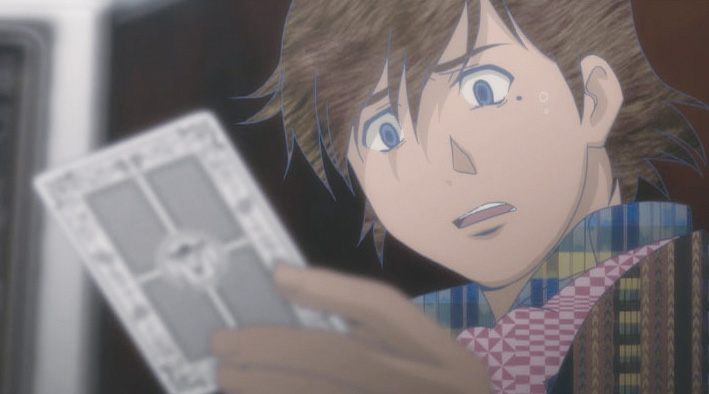 Yet, while Gankutsuou’s SF trappings add to its enjoyment – as does its incredible appearance, to be discussed later – the show doesn’t depend on them. Even if it didn’t have the science-fiction hook, it would still be an excellent story, and an outrageously bold adaptation of its source. Maeda’s version is an adventure and a mystery, revolving around the arrival of the title Count, a powerful, immensely charming man, into Parisian high society, and in particular his influence on a naïve 15-year-old boy, young Albert. The Count shows Albert and his friends staggering wonders, such as a vast underworld where the land is gold and the sea lies under a clockwork cosmos. He also challenges the youngsters, sowing doubts about their privileged lives, their attitudes, their families. Meanwhile, their parents seem even more discomfited by this newcomer, and the memories he stirs….
Yet, while Gankutsuou’s SF trappings add to its enjoyment – as does its incredible appearance, to be discussed later – the show doesn’t depend on them. Even if it didn’t have the science-fiction hook, it would still be an excellent story, and an outrageously bold adaptation of its source. Maeda’s version is an adventure and a mystery, revolving around the arrival of the title Count, a powerful, immensely charming man, into Parisian high society, and in particular his influence on a naïve 15-year-old boy, young Albert. The Count shows Albert and his friends staggering wonders, such as a vast underworld where the land is gold and the sea lies under a clockwork cosmos. He also challenges the youngsters, sowing doubts about their privileged lives, their attitudes, their families. Meanwhile, their parents seem even more discomfited by this newcomer, and the memories he stirs….
Gankutsuou has easily one of the best-told stories ever to grace an anime: provocative, literate, teasing and lyrical, with a deep-rooted menace. It’s far away from the usual anime genres, playing up male friendships, Freudian themes, youthful passions and the deathly cold of their passing. There’s adult content, too. In the first episode, Albert has an erotic seduction under fireworks on the moon… and then the encounter gets really unexpected.
“I thought that because of how well known the original is and how much interest there is, it might be on in an earlier time slot,” notes Maeda. “But there were advantages to it being screened so late at night. There were scenes that we could make the most of because it was on so late, like the sexual scenes. Some of the themes that wouldn’t have been suitable for children like same-sex love, the drugs… things like that that we could make more of.”
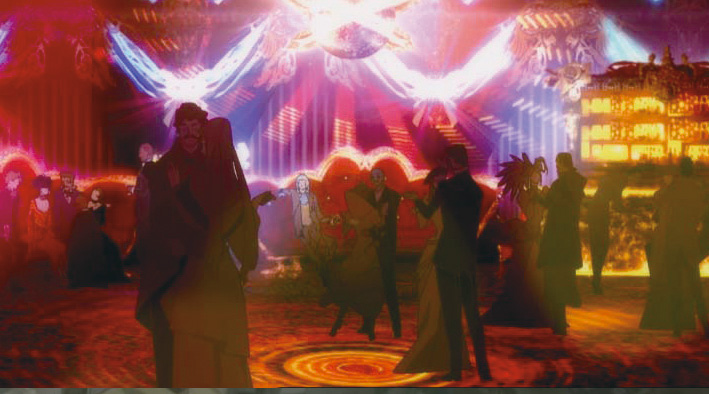 Later, the Count cuts a swathe through Parisian ladies, not needing to remove his cloak to make them stir with longing. If you’re thinking of another Count in nineteenth-century classic fiction, the anime does everything to encourage the suggestion, from colouring the stranger’s face an unworldly blue to giving him Nosferatu ears and pointed teeth.
Later, the Count cuts a swathe through Parisian ladies, not needing to remove his cloak to make them stir with longing. If you’re thinking of another Count in nineteenth-century classic fiction, the anime does everything to encourage the suggestion, from colouring the stranger’s face an unworldly blue to giving him Nosferatu ears and pointed teeth.
Anyone who knows the Dumas original may protest the story is being told inside-out. In the novel, the Count’s origins are no mystery; they’re laid out in the book’s opening section, with Albert (a much more minor character) not introduced until later. Actually, that’s a small change compared to some that the anime makes – don’t expect it to follow Dumas faithfully! Many of the novel’s big scenes, characters and plot turns are present, but there are also massive changes, changing the whole tone and meaning. For example, both versions involve a duel, but – leaving aside the anime’s sword-wielding giant robots – the duels are entirely different, and devastating in the anime.
The anime can be seen as less an adaptation than an argument with the novel, and with its vengeful morality. Maeda describes the series as a de-Christianised (though not amoral) retelling, where flawed characters must find their right and wrong without leaning on God’s judgement. “When it first came out,” recalls Maeda, “people in France said to me ‘Why did you remove the Christianity? That’s one of the most important things in the book.’ I read the Alexandre Dumas original, which in itself was extremely valuable and very, very interesting. But as a non-Christian, like most of the Japanese readers, it wouldn’t have that cultural background. So I wanted to find something more universal. And what was important at the time, when it was published as a newspaper serial, was the politics, the manners, the etiquette, the changes in society in Europe and around the world, and that was something I could sympathise with. That’s not that far removed from life today and so although I removed that large element of the Christianity of the characters and the impact that has on his actions and his feelings, I thought there was another way to approach it.”
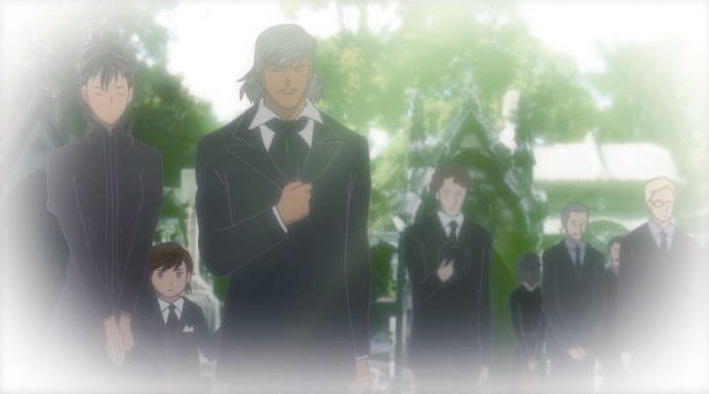 It’s also interesting to compare how Gankutsuou adapts Dumas to the way adapters have tackled another famous nineteenth-century story, Jekyll and Hyde. In the novella by R. L. Stevenson, the relationship between Jekyll and Hyde is a mystery until the last pages; but in nearly every adaptation, we’re told what their connection is in the first act. Gankutsuou does the exact opposite, beginning with a mystery and only adapting the novel’s opening – arguably the most famous part of the story – in flashbacks in the last episodes, where they’re woven through an explosive climax that’s not in the novel.
It’s also interesting to compare how Gankutsuou adapts Dumas to the way adapters have tackled another famous nineteenth-century story, Jekyll and Hyde. In the novella by R. L. Stevenson, the relationship between Jekyll and Hyde is a mystery until the last pages; but in nearly every adaptation, we’re told what their connection is in the first act. Gankutsuou does the exact opposite, beginning with a mystery and only adapting the novel’s opening – arguably the most famous part of the story – in flashbacks in the last episodes, where they’re woven through an explosive climax that’s not in the novel.
Of course, most people know what’s the link between Jekyll and Hyde, even if they know nothing else about the story. Monte Cristo, though it’s beloved by millions, isn’t quite so well-known, and one of the anime’s achievements is that it’s supremely enjoyable and gripping whether you know the book or not. The story was first translated into Japanese in 1901, which was where it picked up its odd retitling Gan Kutsu Ou – “The Cave King”. It seems likely that the first movie adaptation, an American short from 1908, made its way to Japan soon afterwards, although the movie was plunged into scandal by association when an unrelated film The Reign of Louis XVI, was retitled A Strange Tale of North America: The Cave King that same year. Devious distributors, told by the police that a tale of the French Revolution was dangerously anti-monarchist, switched the titles in order to make it seem that the Louis XVI movie was actually a cowboy Monte Cristo, and that the rapier-wielding aristocrats on screen were actually Wild West cattle-rustlers.
In 1977, the novel was turned into The Great Vendetta, a TV serial made in Hong Kong and set in modern China, in which a wronged hero learns multiple languages in prison, and then escapes on the trail of lost treasure from the failed Taiping Rebellion. Two years later, the story was transposed to the seventeenth century on Japanese TV. Here the Count became a samurai, battling the Shimabara Rebellion on the island of Kyushu. Notably, in both cases, the story smuggles in Christian elements from local history, something that Maeda’s anime version was careful to remove.
In science-fiction, The Count of Monte Cristo is often cited as an influence on the seminal American novel The Stars My Destination (aka Tiger Tiger) by Alfred Bester. “I actually wanted to make an anime out of Alfred Bester’s sci-fi novel, Tiger Tiger,” admits Maeda. “So I had a negotiation with the rights holder and they said they wouldn’t allow it to be made into an anime. So I was a bit disappointed but then I realised that what Bester had done was to create a sci-fi version of The Count of Monte Cristo so I thought I could just do the same thing.” Maeda’s show envisions a retro-space age whose society and characters are firmly grounded in nineteenth-century fiction, but where going to the moon is as easy as crossing the Channel. As such, Gankutsuou is comparable to a wonderful British novel, Harm’s Way by Colin Greenland, which combines Dickensian prose and sail-blown spaceships.
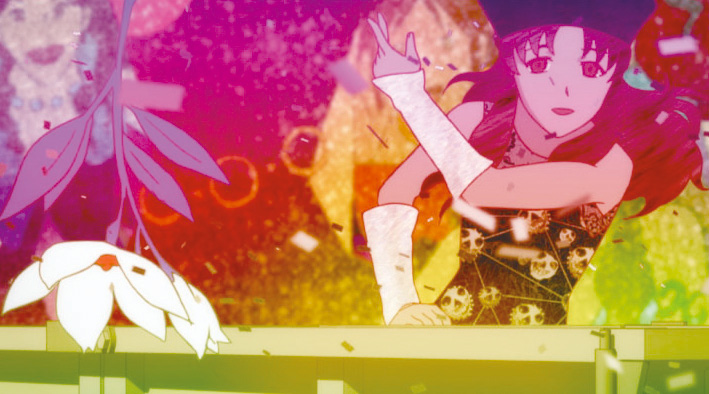 The look of Gankutsuou, though, is something else. Both Maeda and Gonzo had form in combining traditional animation with CG, with Maeda directing Gonzo’s Blue Submarine No 6 (released on video between 1998 and 2000). But Gankutsuou went an extra mile, using a most peculiar approach. Throughout the series, parts of objects and characters (for example, a person’s hair or jacket) are realised as digital patterns which seem to flow autonomously if the character moves. This effect often appears mistakenly in animation, both analog and digital, but Gankutsuou exaggerates it to define the show’s psychedelic aesthetic. Gankutsuou looks like a digital Yellow Submarine, or one of the patchwork steampunk fantasies by Karel Zeman. Freeze any frame and it could be a glossily stylised graphic novel.
The look of Gankutsuou, though, is something else. Both Maeda and Gonzo had form in combining traditional animation with CG, with Maeda directing Gonzo’s Blue Submarine No 6 (released on video between 1998 and 2000). But Gankutsuou went an extra mile, using a most peculiar approach. Throughout the series, parts of objects and characters (for example, a person’s hair or jacket) are realised as digital patterns which seem to flow autonomously if the character moves. This effect often appears mistakenly in animation, both analog and digital, but Gankutsuou exaggerates it to define the show’s psychedelic aesthetic. Gankutsuou looks like a digital Yellow Submarine, or one of the patchwork steampunk fantasies by Karel Zeman. Freeze any frame and it could be a glossily stylised graphic novel.
“I’d always had this idea that with digital animation there’s no reason why you would have to stick with painted surfaces, that you could use different kind of textures,” says Maeda. “This project was set inside grand aristocratic houses and I was worried that pencil drawings wouldn’t work, wouldn’t be as effective to portray that so I came up with the idea of using fabric textures like fur, like sequins or sparkles, and ignoring the scale of those and just creating a kind of collage.
“At the time the hand-drawing style [in other anime] was very busy. Character designs had lots of very fine detail and lines, including the costumes and I wasn’t really a fan of that style. I preferred cleaner silhouettes like you have in the traditional Noh theatre of Japan, where the silhouettes are very box like and then you have layers of textured textiles. And that combined with the small masks they wear creates an abstract form for the actors which is something I wanted to try to recreate.”
Rather than separate bodies, the characters seem like vectors of colour which could spill into each other, or collections of pieces which only cohere through the drama they’re enacting. Like the equally-strange Ping Pong, the approach has detractors, but it’s wonderfully immersive in a truly new way for viewers who take the leap. And that’s what a reimagining should be.
Andrew Osmond is the author of 100 Animated Feature Films.
Gankutsuou is released on Blu-ray by Anime Limited.
Alexandre Dumas, Alfred Bester, anime, Count of Monte Cristo, Gankutsuou, Japan, Mahiro Maeda
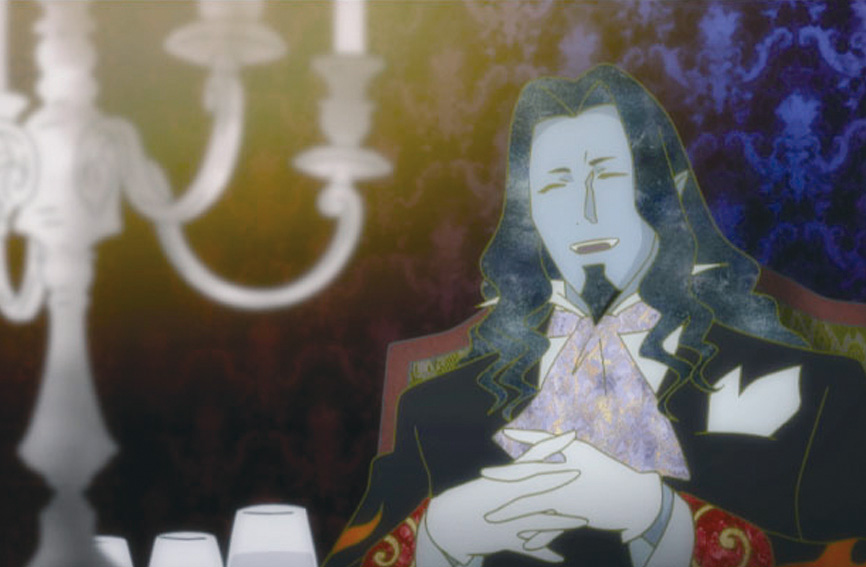
Leave a Reply